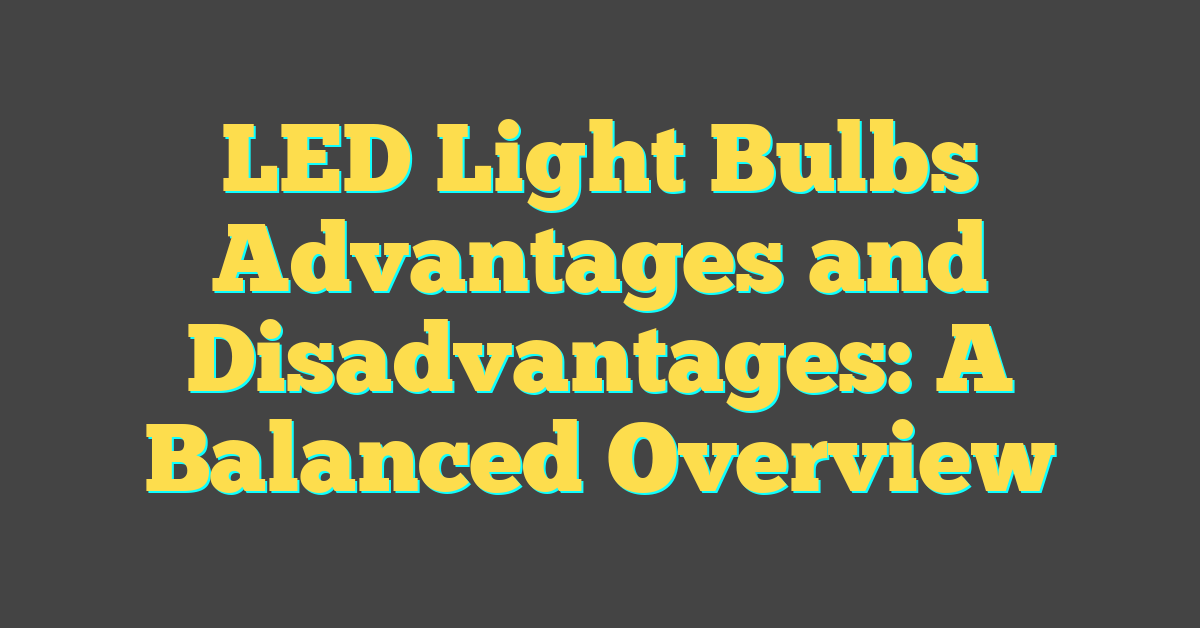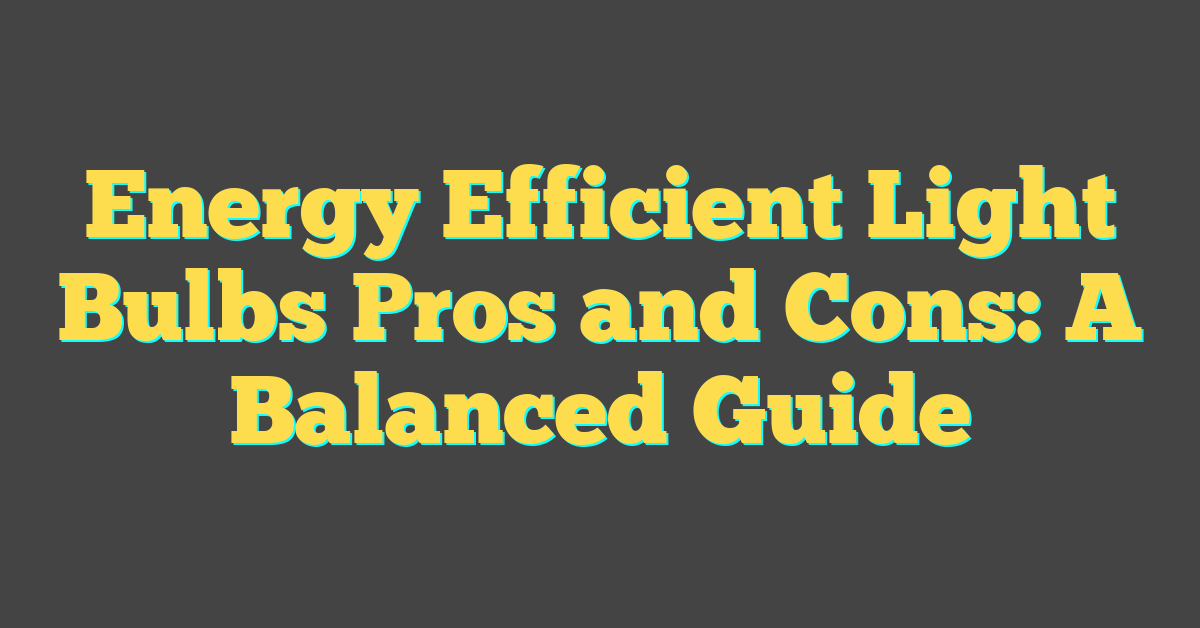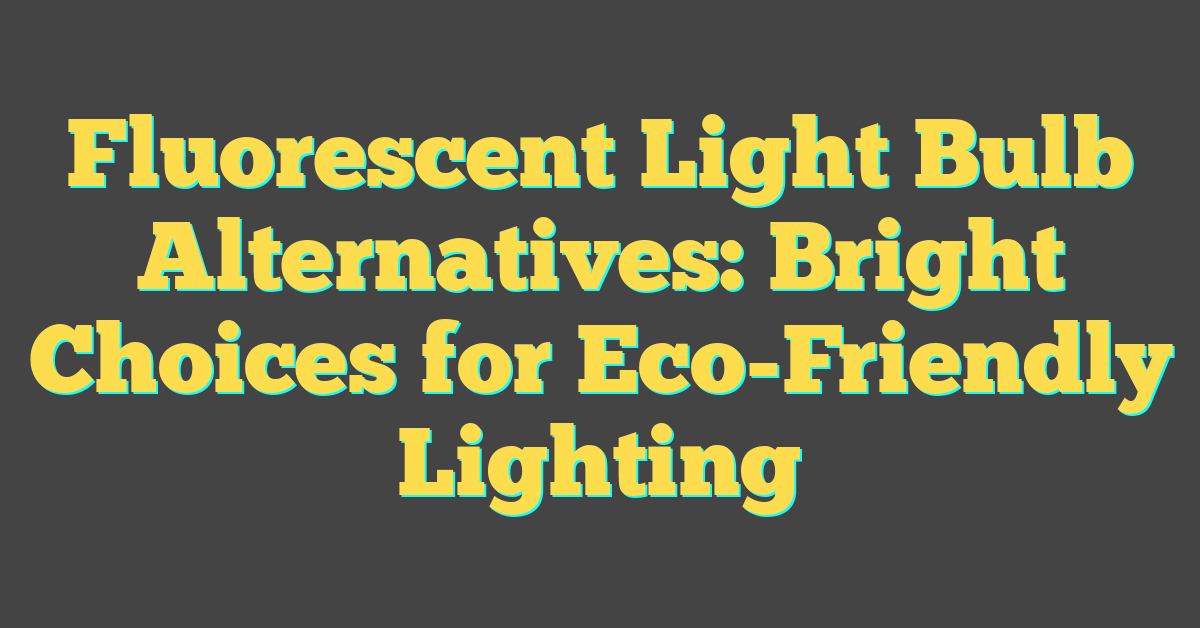Compact Fluorescent Lamps, commonly referred to as CFL light bulbs, are a popular choice among indoor gardening enthusiasts. The reason lies in their ability to provide a wide spectrum of light, mimicking the sun’s natural rays, which is essential for plants to photosynthesize and thrive. Unlike traditional incandescent bulbs, CFLs convert more energy into light rather than heat, which allows you to place them closer to your plants without the risk of overheating them.


Choosing the right lighting for your indoor garden is crucial, and CFL light bulbs stand out as a reliable and energy-efficient option. They come in a range of shapes, sizes, and wattages to suit different plant types and growth stages. While daylight bulbs encourage vegetative growth by mimicking the cool light of morning, soft white bulbs are beneficial during the flowering stage for their warmer tones. Additionally, the lower operating temperature of CFLs makes them suitable for small spaces where controlling climate is essential.
Key Takeaways
- CFLs provide a spectrum of light suitable for different plant growth stages.
- They run cooler than incandescent bulbs, allowing for flexible placement near plants.
- Selecting the appropriate CFL wattage and color temperature is key for optimizing plant health.
Understanding CFL Bulbs
https://www.youtube.com/watch?v=AYsadxI0UKk&embed=true
When considering lighting options for your indoor plants, CFL (Compact Fluorescent Light) bulbs offer several advantages, including energy efficiency and low heat emission. Let’s dig into the technology behind these bulbs and compare CFLs to other lighting options.
Technology Behind Compact Fluorescent Lights
CFL bulbs work by driving an electric current through a tube containing argon and a small amount of mercury vapor. This generates invisible ultraviolet light that excites a fluorescent coating on the inside of the tube. This coating then emits visible light. CFLs are designed to replace traditional incandescent bulbs, fitting into standard lamp sockets while using a fraction of the electric power and lasting much longer.
CFL Bulbs Vs. Other Light Bulbs
Comparing CFL bulbs to other types of bulbs is crucial to understanding their benefits for plant growth:
- CFL vs. Incandescent Bulbs: CFLs use about 70-90% less energy than incandescent bulbs and can last up to 10 times longer. However, incandescent bulbs are less expensive upfront but don’t offer the same energy savings or longevity.
- CFL vs. LED (Light Emitting Diodes): While CFLs are cost-effective, LEDs are even more energy-efficient and have a longer lifespan but come at a higher initial cost. For growing plants, both can be suitable, but your choice depends on the specific light requirements and budget.
- CFL vs. T5 Fluorescent Bulbs: T5s are a type of fluorescent bulb that is more slender and efficient than older, thicker fluorescent bulbs. T5 bulbs are specially designed for plant growth, with high output and an ideal spectrum range for vegetative growth. CFLs are more flexible in terms of placement due to their compact size and fit into standard light fixtures without special equipment.
Benefits of Using CFL Bulbs for Plant Growth

Choosing the right lighting for your indoor plants can be a game-changer, and CFL grow lights offer numerous advantages that cater to both novice and seasoned gardeners. Let’s explore the specific benefits of using CFL bulbs to encourage healthy plant growth.
Energy Efficiency and Cost Savings
CFL, or Compact Fluorescent Lights, are known for their energy-efficient nature, using approximately 75% less energy than standard incandescent bulbs. This efficiency translates to cost savings on your electricity bill, making them an affordable option for illuminating your plants. They also last longer, which means you won’t be replacing them as frequently, adding to the overall savings.
Low Heat Emission
One of the key benefits of CFLs is their low heat emission, thus minimizing the risk of heat damage to your plants. Unlike other grow lights that produce significant amounts of heat, CFLs allow you to place the bulbs closer to the foliage without the worry of scorching, ensuring your plants receive the optimal light without excessive heat.
Versatility and Spectrum Range
CFL bulbs come in a variety of wattages and sizes, which affords you the versatility to outfit your growing space as needed, whether you’re working with a large room or a small countertop garden. Importantly, these bulbs provide a full spectrum of light, mirroring the natural sunlight which is essential for plant growth and development through all stages, from vegetative to flowering.
The Role of Light in Plant Growth
https://www.youtube.com/watch?v=yMpk27jGGlQ&embed=true
Light plays an indispensable part in your plant’s life cycle. Specifically, the type and quality of light received can greatly influence how well your plants grow.
Photosynthetically Active Radiation (PAR)
Photosynthetically Active Radiation (PAR) is the spectrum of light that is available for use in photosynthesis. This range falls between 400 to 700 nanometers and is critical for your plants since it provides the energy they need to create sugars from carbon dioxide and water. Growing plants need adequate PAR to ensure they can produce these sugars, which fuel all other growth processes.
Color Temperature and Plant Response
« Parts of Light Bulb Holder: A Guide to Components and Functions
What Light Bulbs for Living Room: Find the Perfect Glow for Your Space »
Color Temperature refers to the hue of light emitted from a bulb, measured in Kelvin (K). Plants react differently to varying color temperatures at different growth stages.
- Cool White, with a higher color temperature around 6500K, emits more blue wavelengths, encouraging compact bushy growth, often desired during the vegetative stage.
- Warm White, around 2700K, provides a redder spectrum, ideal for supporting the flowering and fruiting stages.
Your choice between daylight bulbs and warmer or cooler options should align with your plant’s current growth stage for optimal development.
Selecting the Right CFL Bulbs for Your Plants
https://www.youtube.com/watch?v=QJjKQbbQqXM&embed=true
When choosing CFL bulbs for your indoor gardening, focusing on wattage, brightness, and color temperature is crucial for the health and growth of your plants.
Considering Wattage and Brightness
Watts measure the energy usage of a bulb, while lumens indicate the amount of light it emits. For plant growth, a higher lumen output means a brighter light, which can affect how well your plants perform photosynthesis. Typically, you should aim for about 60-80 watts per square foot of grow space for sufficient brightness.
- Small plants: 13-40 watts
- Medium plants: 40-90 watts
- Large plants: 90+ watts
Understanding Color Temperatures
Color temperature is measured in Kelvins (K) and influences plant growth phases. Soft white bulbs (2700K) emit a warm white light, ideal for the flowering stage. On the other hand, daylight bulbs (6500K) provide a cool white light that’s beneficial during the vegetative phase.
- Vegetative Stage: Aim for higher Kelvins, around 5000K to 6500K.
- Flowering Stage: Lower Kelvins, about 2500K to 3000K.
By matching the right CFL grow lights to your plants’ growth stages, you can optimize their development and yield.
Setting Up Your Indoor Plant Lighting System
https://www.youtube.com/watch?v=isiPxMJv90E&embed=true
When equipping your indoor garden, CFL (Compact Fluorescent Lamp) lights stand out as an economical choice that can be customized easily for the growth and health of your plants. It’s all about optimizing the light your plants receive through compatible fixtures and effective use of reflectors.
Choosing Compatible Light Fixtures
Setting up your lighting system begins with choosing the right light fixtures to house your CFL bulbs. Maxlite and Agrobrite are popular brands that provide fixtures suitable for CFL bulbs. Here’s what to consider:
- Socket Type: Ensure the fixture has the correct socket type for your CFL bulbs. The most common is a standard E26/E27 base.
- Placement: Position the fixtures so that they can be easily adjusted and moved as your plants grow.
| Fixture Type | Pros | Cons |
|---|---|---|
| Tube | Even light distribution | Larger, takes up more space |
| Lamp | Flexible, good for small spaces | More directed light, may need many |
Effective Use of Reflectors
Reflectors are essential for directing light back to your plants and maximizing exposure. A good reflector can increase the efficiency of your CFL lights significantly. When installing reflectors:
- Material: Use highly reflective materials such as aluminum or Mylar.
- Placement: Adjust the angle of your reflectors to ensure light covers the plants evenly and does not cause hotspots.
Incorporate these elements into your indoor lighting system and your plants will have a better environment to thrive with your carefully selected CFL lights.
Specific Plants and Their Lighting Needs

When setting up your indoor garden, understanding the unique lighting needs of different plant categories is essential. You’ll find your greens, flowering plants, and herbs thrive under the correct illumination.
Growing Leafy Greens Like Lettuce
Lettuce and other leafy greens are well-suited to CFL grow lights due to their lower light requirements. During their vegetative period, which is the main stage of growth for leafy greens, aim for 14-16 hours of light per day. The cool spectrum of CFL lights is ideal for keeping your lettuce crisp and healthy.
Flowering and Fruiting Plants Care
For plants in the flowering phase, such as tomatoes, the introduction of CFL lights with a warmer spectrum supports robust blooms and fruit set. These plants typically require more intense light, around 16-18 hours daily. Remember to position your lights closer to provide sufficient energy for the growth of your fruits and flowers.
Herbs and Seedlings Lighting Requirements
Starting your seedlings under CFL lights facilitates a strong, healthy beginning. Provide them with 16 hours of light to mimic the long days of spring. As for herbs, they flourish with a balance, benefiting from the full spectrum that CFL bulbs provide, generally requiring 14-16 hours of light per day. Your herbs will be aromatic and flavorful with the right lighting conditions.
Optimizing Plant Growth with Lighting Cycles
https://www.youtube.com/watch?v=CoFFzuVIWIo&embed=true
When you’re aiming to maximize the health and yield of your plants, understanding and managing lighting cycles is critical. The right light cycle can make a significant difference in your plant’s vegetative and flowering stages.
Vegetative vs. Flowering Light Cycles
During the Vegetative Phase, your plants require more hours of light, often around 16 to 18 hours daily, to promote leafy growth. This simulates the long days of summer and encourages your plants, including species like cannabis, to develop their structure and foliage.
On the other hand, the Flowering Phase demands a change to a 12-hour light cycle, mimicking the shorter days of autumn. This signals to your plants that it’s time to start producing flowers or fruit. For plants under grow lights, especially if you’re cultivating cannabis, this shift is crucial for their maturation and the development of buds.
Using Timers for Consistent Lighting
Using a Timer is perhaps the most efficient way to ensure consistent light cycles. It removes the need for manual intervention and reduces the risk of human error. Here’s how you can set it up:
- Program your timer to turn on the lights for 16-18 hours during the vegetative stage.
- Adjust the program to switch to a 12-hour cycle once you’re ready for the flowering stage.
- Ensure the lights turn off at the same time every day to maintain a consistent cycle.
By automating the lighting, your growing plants receive the exact amount of light they need without the probability of stress that can happen with irregular lighting patterns. This consistency is vital for the development of healthy, robust plants.
Maintaining Your CFL Grow Lights
Proper maintenance of your CFL grow lights is crucial to ensure longer lifespan and optimal performance for your indoor plants. Regular care includes cleaning, bulb replacement, and addressing common lighting issues.

Cleaning and Bulb Replacement
To keep your CFL grow lights performing well, it’s important to routinely clean your bulbs. Dust and dirt can shield your plants from the full intensity of the light. Gently wipe the bulbs with a dry, soft cloth when they are cool to the touch. Replacement of bulbs should occur when you notice a significant decrease in light output or if the bulb color changes. Compact fluorescent bulbs usually have a longer lifespan than traditional bulbs, but they still require attention. Monitor their performance and plan for replacements every 6 to 12 months, depending on usage, to prevent a sudden disruption in your plant growth.
Avoiding Common Lighting Issues
To avoid common issues with CFL lights:
- Do not frequently turn them on and off; this shortens their lifespan.
- Position your CFL bulbs close to plants—ideally within inches—as their intensity diminishes rapidly with distance.
- Ensure that fluorescent tubes are securely fitted in their fixtures to avoid flickering, which can cause stress to plants.
- Rotate your plants regularly to provide even light distribution and prevent stretching toward the light source.
By following these maintenance tips, you’ll help extend the life of your indoor grow lights and promote healthier plant growth.
Challenges and Considerations

When you’re cultivating plants indoors, managing the micro-environment is vital. Below we’ll touch upon how to handle heat and light challenges that come with using Compact Fluorescent Lamps (CFLs) for growing your indoor plants.
Dealing with Heat and Temperature Fluctuations
CFLs generate less heat compared to other types of grow lights, but heat can still accumulate, especially in a small space. It’s important to monitor temperatures closely, ensuring your plants don’t get too hot. Using reflectors can help distribute light evenly and reduce hotspots. Reliable thermometers are a good investment to keep an eye on your garden’s climate.
- Monitor Regularly: Check temperatures multiple times a day.
- Use Reflectors: Aim to distribute light and minimize heat stress on plants.
Light Penetration and Plant Placement
While CFLs are versatile, their light penetration is less intense than other grow lights. This means you need to position your plants no more than a few inches away from the CFLs to maximize their effectiveness. For even growth, rotate your plants periodically.
- Distance Is Key: Keep CFLs close—within a few inches of your plants’ canopy.
- Rotation: Regularly rotating your plants ensures even exposure to light.
Remember, effective CFL usage not only requires appropriate proximity but also the right spectrum of light for your indoor plants to thrive.
CFL Bulb Brands and Products

When you’re looking for CFL bulbs suitable for growing plants, there are several brands offering products that cater to different needs, from energy efficiency to affordability. Let’s explore some options to help you find the perfect fit for your plant growth needs.
Comparing Popular CFL Grow Light Brands
Hydrofarm and SunBlaster stand out as leading brands in the CFL grow light market. Hydrofarm is known for its Agrobrite line, which includes a range of compact fluorescent systems that are popular among indoor plant growers for their reliability and performance.
- Hydrofarm Agrobrite: Offers full-spectrum CFL bulbs with high lumen output, which is crucial for vegetative growth.
- SunBlaster CFL: Recognized for the Self Ballasted Propagation Lamp, a favorite because it is easy to use and integrates well with different plant setups.
Choosing Budget-Friendly CFL Options
If you’re on a tight budget, you don’t have to compromise on quality. Maxlite is a brand that provides affordable CFL grow lights without sacrificing the light quality your plants need.
- Maxlite Bulbs: Known for their energy efficiency and cost-effectiveness, usually available in multipacks, which can provide additional savings.
When considering budget-friendly options, look for multipacks or value-series from reputable brands to obtain the best possible deal. Remember, investing in the right grow lights can lead to healthier plants and potentially better yields.
Beyond CFLs: Exploring Other Lighting Options
https://www.youtube.com/watch?v=dsya6ySIy-Q&embed=true
While CFLs are a great starting point for gardening indoors due to their affordability and accessibility, you might find that your plants will benefit from other lighting technologies as they grow or as your indoor garden expands.
LEDs and Their Advantages
LED lights offer a spectrum of advantages, especially when it comes to energy efficiency and lifespan. Unlike CFLs or fluorescent lamps, LEDs can last up to 25,000 hours or more, significantly reducing the frequency of replacement. Their lower heat output means you can place them closer to your plants without the risk of heat damage. Here’s a quick comparison:
- Energy Consumption: LEDs use approximately 50% less electricity than CFLs.
- Heat Output: LEDs emit minimal heat compared to HID lights and CFLs, making them safe for close proximity to plants.
- Spectrum Range: Some LEDs are designed to emit full-spectrum natural light, which is optimal for plant growth at all stages.
Advanced HID Lights for Intensive Growing
For enthusiasts ready to take their indoor gardening to a more advanced level, High-Intensity Discharge (HID) Lights could be the next step. There are two main types of HID lamps:
- Metal Halide (MH): These are great for vegetative growth, producing a sunlight-mimicking spectrum.
- High-Pressure Sodium (HPS): Excellent for flowering stages with their red to orange spectrum.
Here are some facts about HID lights:
- Intensity: They are much more intense than LEDs or CFLs and can cover a larger area.
- Energy Use: HIDs are less energy-efficient than LEDs and can lead to higher electricity bills.
- Installation: They require specific fixtures and ventilation systems due to their high heat output.
Remember to balance your choice of lighting with both your individual growing needs and the unique requirements of your plants. Shifting from CFL to LED or HID might be beneficial depending on the growth stage and plant species.




